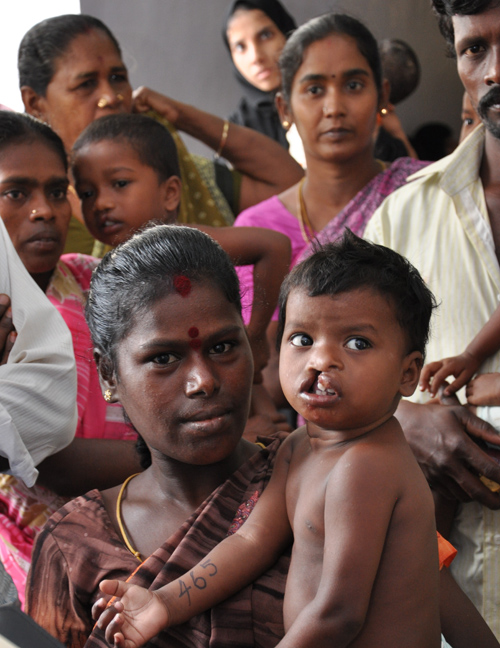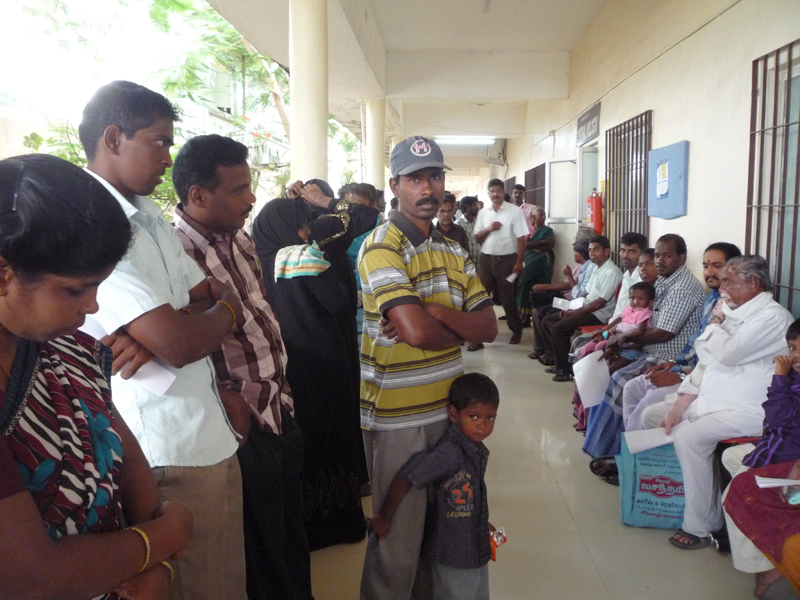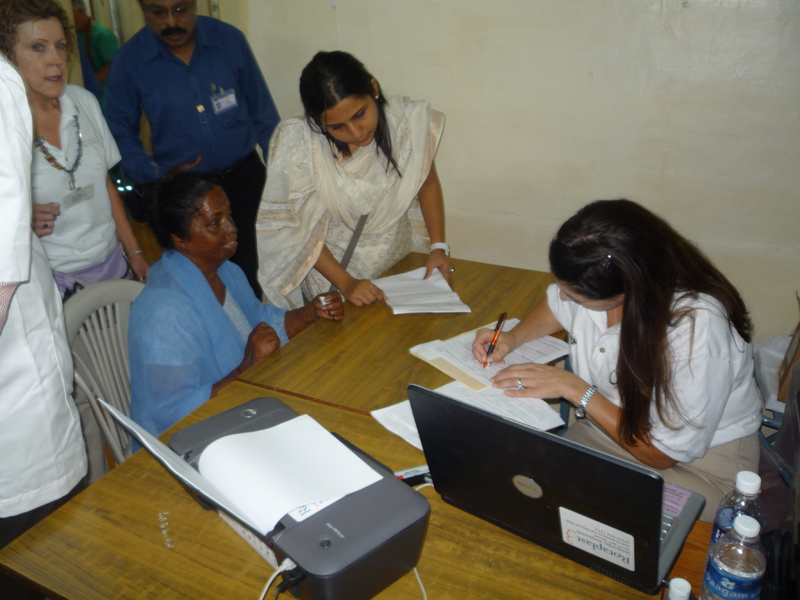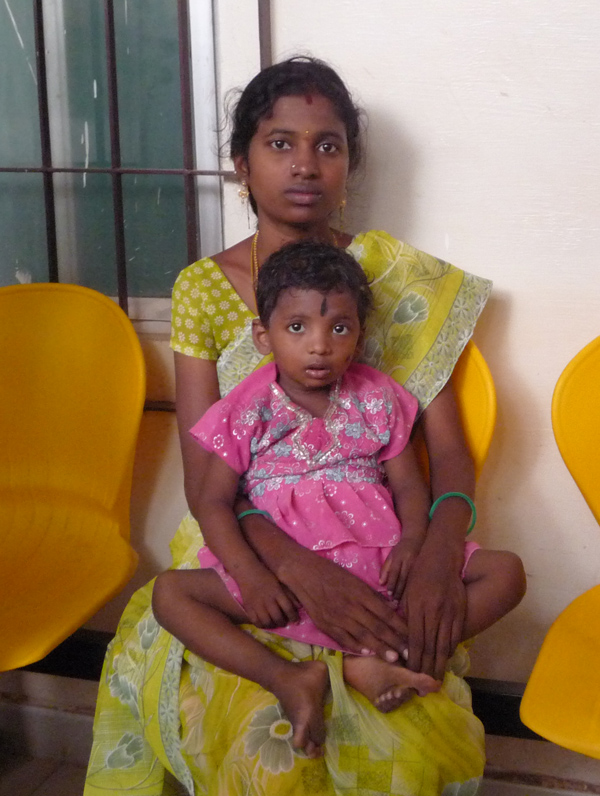
Long before the Rotaplast team arrives, local Rotarians begin spreading the word about the upcoming clinic. Rotaplast spread the word far and wide and it’s amazing just how far the word travels. Many of these people have traveled long distances; some have traveled by train for as long as three days from Calcutta for their chance to be seen by the Rotaplast team. It speaks volumes, both about the need that Rotaplast meets, and the reputation the teams have.

Patients and their families begin lining up in the early morning hours. In a short ribbon-cutting ceremony, we welcomed the first patient of the 2012 mission.
The intake clinic is an exercise in controlled chaos. Imagine 85 patients, each with two family members, 28 Rotaplast team members, and 20 Indian medical staff all trying to work in a one room clinic in 95 degree heat and 95% humidity. The noise can be deafening at times with crying babies and the added trouble with translating because everyone seems to think the louder you are, the more easily you’re understood.
Patients begin with administration, filling out forms, and giving basic demographic information and then get their photos taken for their medical records. Patients then move through vital signs, dentistry, pediatrician, surgeon, and anesthesia. In addition to screening, intake day is the time to develop the plan of action for surgery and scheduling.

Clinic begins with a visit to Lisa Teske the Medical Records Specialist. Then it’s off to have their picture taken by Dave Windom, the photojournalist.
In some cases patients are turned away because they have a pre-existing condition such as a fever or other infection, airway difficulties such as colds or asthma, previous reactions to anesthesia, and heart conditions can all lead to a very disappointed patient being turned away. The team uses the standard of 10,10,10 rule to ensure that the patient is ten weeks old, 10 hemoglobin, and a weight of ten pounds to determine the safety of anesthesia and surgery. It’s heart breaking to turn someone away who has traveled so far and has such an emotional investment in getting life changing surgery, but precautions have to be taken.

The tension and stress can run high on intake day. Parents and kids are scared yet very much driven to get “a beautiful smile.” Kids get tired of being poked and prodded by teams of strangers who speak a different language and tend to get a little cranky by the end of the day. Eventually, it all comes together and a schedule is produced, patients are told when to report back, and the team puts the operating rooms together for the next day.




